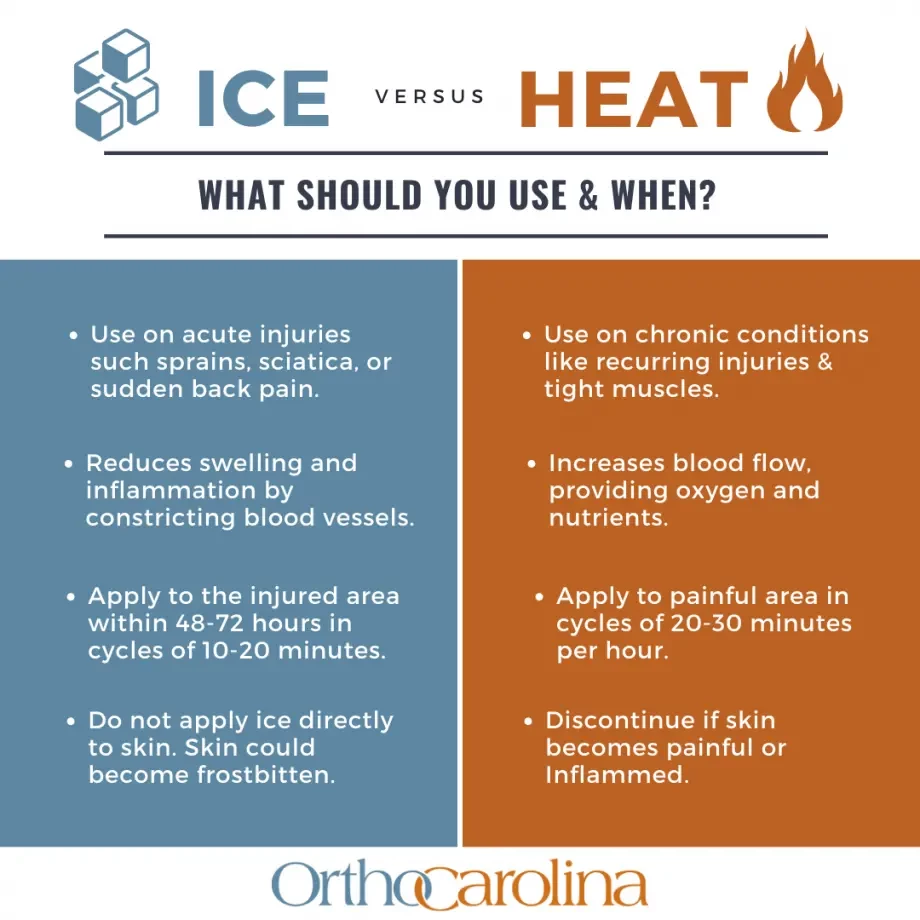Physical Address
304 North Cardinal St.
Dorchester Center, MA 02124

Cryotherapy involves cold therapy to reduce inflammation and manage pain, while heat therapy uses warmth to relax muscles and increase blood flow. Both treatments offer unique benefits for managing various injuries and conditions.
Cryotherapy and heat therapy are two popular treatments used to manage pain and promote healing. While cryotherapy involves the use of extreme cold to reduce inflammation and alleviate pain, heat therapy uses warmth to relax muscles and increase blood flow.
These treatments offer distinct benefits for managing various injuries and conditions. Understanding the differences between cryotherapy and heat therapy can help individuals make informed decisions about which therapy may be best suited to their specific needs. We will explore the characteristics, benefits, and potential considerations of both cryotherapy and heat therapy to aid in making an informed choice.

Credit: plunge.com
Cryotherapy is a trendy wellness treatment that involves exposing the body to extremely low temperatures for a few minutes. It is believed to offer various health benefits and is often used for recovery, pain management, and overall well-being.
Cryotherapy, also known as cold therapy, is a minimally invasive treatment that exposes the body or specific areas to extremely low temperatures. This can be achieved through whole-body cryotherapy, which involves stepping into a cryotherapy chamber, or localized cryotherapy using tools like ice packs or cryotherapy machines. The exposure to intense cold triggers a natural response in the body, stimulating circulation and activating the nervous system.
During cryotherapy, the body’s exposure to the cold triggers vasoconstriction, a process where the blood vessels narrow, reducing blood flow to the affected area. As a response to the cold, the body then works to increase circulation to warm the area. This process can help reduce inflammation, relieve pain, and promote healing. Additionally, cryotherapy prompts the release of endorphins, providing a natural mood boost.
Heat therapy is a popular method of pain relief and relaxation that involves the application of heat to the body. It is commonly used to soothe sore muscles, alleviate stiffness, and promote increased blood flow to the affected area. Heat can be applied in various forms, such as heating pads, warm compresses, hot baths, and heat wraps. Understanding the basics of heat therapy, including its effects and benefits, can help individuals make informed decisions about its use for their specific conditions.
Heat therapy, also known as thermotherapy, is a therapeutic technique that utilizes heat to relieve pain, enhance healing, and promote relaxation. It can be applied locally to specific areas of the body or used for overall relaxation. Heat therapy helps expand blood vessels, increasing blood flow and allowing oxygen and nutrients to reach injured tissues, thereby aiding the healing process.
Heat therapy works by increasing the temperature of the skin and underlying tissues. This elevated temperature leads to vasodilation, which enables the blood vessels to widen, improving circulation to the affected area. Additionally, the warmth from heat therapy can help to relax muscles and reduce stiffness, contributing to overall pain relief and enhanced flexibility.
In addition to its ability to soothe muscle pain and stiffness, heat therapy can also provide a range of benefits, including:
Cryotherapy, also known as cold therapy, can be a beneficial treatment option for various purposes. Whether you’re dealing with an injury, inflammation, muscle recovery and soreness, or skin conditions, cryotherapy can offer relief and enhance your overall well-being. In this article, we will explore when and how cryotherapy can be used effectively for these specific purposes.
When it comes to injuries and inflammation, cryotherapy can be a valuable tool in the healing process. By applying extreme cold temperatures to the affected area, cryotherapy helps to reduce swelling and minimize pain. The cold temperature constricts blood vessels, reducing blood flow to the injured area and slowing down the inflammatory response. This can help expedite the healing process, allowing you to recover faster and get back on your feet sooner.
Intense physical activity and exercise can often lead to muscle soreness and fatigue. Cryotherapy can provide much-needed relief in such situations. By subjecting your muscles to cold temperatures, cryotherapy helps to decrease inflammation and swelling in the muscle tissues. This, in turn, can alleviate muscle soreness, improve circulation, and speed up the recovery process. If you’re an athlete or engage in regular exercise, incorporating cryotherapy into your routine can aid in optimizing your performance and reducing post-workout discomfort.
Cryotherapy can also be an effective treatment for certain skin conditions. Cold temperatures can help reduce redness, itching, and inflammation associated with conditions like eczema, psoriasis, and dermatitis. The localized cooling effect can provide temporary relief and improve the overall appearance and texture of the skin. Additionally, cryotherapy stimulates collagen production, which can enhance the skin’s elasticity and promote a youthful complexion.

Credit: www.orthocarolina.com
Heat therapy can be effective in various situations to help alleviate discomfort and promote relaxation. Below are the key scenarios when heat therapy could be beneficial:
Heat therapy is helpful for loosening tight muscles and reducing stiffness. When muscles are tense, applying heat can improve blood flow and release tension.
For individuals with joint pain or arthritis, using heat therapy can help relieve discomfort by reducing stiffness and increasing flexibility.
Heat therapy is also beneficial for promoting relaxation and reducing stress. The warmth can create a soothing effect on the body and mind.
Bold start by evaluating your condition and needs
bold Heat therapy is ideal for chronic pain or stiffness
bold Always seek advice from a healthcare professional
bold They can recommend the most suitable option
bold Consider your medical history and any contraindications
bold Experiment with both therapies to see what works best
bold Pay attention to how your body responds
bold Keep track of the effectiveness of each therapy

Credit: www.amazon.com
Both heat and ice therapy can be beneficial, depending on the injury. Heat therapy helps relax muscles and increase blood flow, while ice therapy reduces inflammation and numbs pain. Ultimately, the best choice is based on the specific injury and individual preference.
Cryotherapy should not be used when pregnant, with cold intolerance, or Raynaud’s syndrome. Also avoid in open wounds and with certain medical conditions.
Heat therapy may cause burns, dehydration, and discomfort. Prolonged use can lead to skin damage. Heat may exacerbate inflammation in some cases.
Heat is better for inflammation as it improves blood flow and relaxes muscles, reducing pain. Cold reduces swelling by constricting blood vessels, but heat is more effective in soothing inflammation. Remember to consult a healthcare professional for personalized advice.
Both cryotherapy and heat therapy offer unique benefits for pain relief and recovery. Cryotherapy can reduce inflammation and promote healing, while heat therapy can relax muscles and improve circulation. The choice between the two depends on the individual’s specific needs and preferences.
It is advisable to consult with a healthcare professional to determine the most suitable therapy for one’s condition. By understanding the differences and benefits of cryotherapy and heat therapy, individuals can make informed decisions to enhance their overall well-being.

